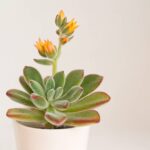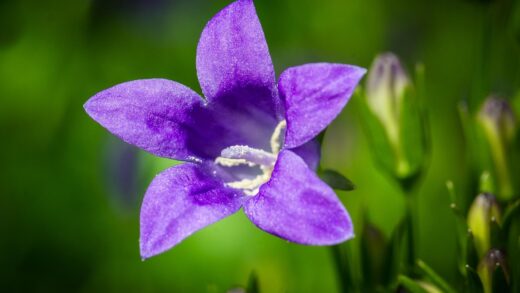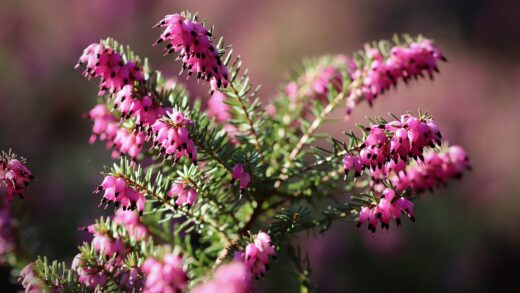Successfully establishing Bidens ferulifolia in your garden or on your balcony begins with proper planting techniques that cater to its specific needs. This vibrant, sun-loving annual thrives when given a strong start, which involves selecting the right location, preparing the soil appropriately, and handling the young plants with care during the transplantation process. Whether you are working with nursery-grown seedlings or propagating your own plants, the initial steps you take will set the stage for a season of abundant, golden-yellow blooms. The ideal time for planting outdoors is after the last threat of spring frost has passed and the soil has had a chance to warm up, providing a welcoming environment for the roots to grow and expand.
The first critical step in the planting process is site selection. The gold of the balcony is an avid sun-worshipper and requires a location that receives a minimum of six to eight hours of direct sunlight each day. Without sufficient light, the plant will struggle to produce its characteristic profusion of flowers and may develop a weak, leggy habit. When choosing a spot, also consider its mature size and trailing nature; give it ample space to spill over the edges of containers, hanging baskets, or raised beds without encroaching on its neighbors. Good air circulation is also important to help prevent fungal diseases, so avoid planting it in overly crowded or stagnant areas.
Once the location has been chosen, preparing the growing medium is the next priority. For container planting, a high-quality, well-draining potting mix is essential. Look for a mix that is light and airy, often containing peat moss, coir, and perlite. To further enhance drainage, you can add an extra handful of perlite or coarse sand to the mixture. If you are planting directly into a garden bed, it is crucial to amend the existing soil. Heavy clay soils must be improved by incorporating organic matter such as compost or well-rotted manure to improve both drainage and aeration, creating a friable soil structure that its roots can easily penetrate.
When you are ready to plant your nursery-grown seedlings, handle them gently to minimize transplant shock. Water the plants in their original containers about an hour before you plan to move them; this helps the root ball to hold together. Carefully remove the plant from its pot, and if the roots are tightly coiled or ‘root-bound’, gently tease them apart with your fingers to encourage them to grow outwards into the new soil. Dig a hole that is roughly the same depth and slightly wider than the root ball, place the plant in the hole ensuring the top of the root ball is level with the surrounding soil surface, and then backfill with your prepared soil mix, firming it gently around the base of the plant.
After planting, a thorough watering is crucial to settle the soil around the roots and eliminate any air pockets. This initial watering ensures good contact between the roots and the soil, which is vital for the uptake of water and nutrients. For the first week or two after planting, monitor the soil moisture carefully, keeping it consistently moist but not waterlogged as the plant establishes itself in its new home. This careful attention during the planting phase is a direct investment in the long-term health and spectacular flowering performance of your gold of the balcony.
More articles on this topic
Propagation from seeds
Propagating Bidens ferulifolia from seed is a cost-effective and rewarding way to produce a large number of plants for your garden displays. The process should begin indoors, approximately six to eight weeks before the last anticipated frost date in your region. This timing gives the seedlings ample opportunity to develop into strong, healthy plantlets that are ready for transplanting once the weather becomes reliably warm. To start, you will need a sterile seed-starting mix, which is specifically formulated to be fine-textured and free of pathogens that can harm delicate seedlings.
Fill your seed trays or small pots with the pre-moistened seed-starting mix, leveling it off gently. Sow the Bidens seeds on the surface of the soil and lightly press them in, but do not cover them with a significant amount of soil, as they require light for germination. A very fine dusting of vermiculite or mix over the seeds is sufficient. After sowing, cover the trays with a clear plastic dome or plastic wrap to create a mini-greenhouse effect. This helps to maintain the high humidity levels that are essential for successful germination.
Place the covered trays in a warm location that receives bright, indirect light. A consistent temperature of around 21 to 24 degrees Celsius is ideal for germination, which typically occurs within seven to fourteen days. During this period, it is important to check the trays daily and ensure the soil surface remains moist, misting it lightly with water if it begins to dry out. Once the first true leaves appear, you can remove the plastic cover to increase air circulation and prevent fungal issues like damping-off disease.
As the seedlings grow, they will require progressively more light. If you cannot provide at least 12-16 hours of bright, natural light, it is highly advisable to use a grow light to prevent the seedlings from becoming weak and leggy. Once the seedlings have developed several sets of true leaves and are large enough to handle, they can be carefully transplanted into individual pots to continue growing. This process, known as ‘pricking out’, gives each seedling more space to develop a robust root system before its final move into the garden.
More articles on this topic
Propagation by cuttings
Another highly effective and popular method for propagating the gold of the balcony is through stem cuttings. This technique allows you to create genetically identical clones of a healthy parent plant and is particularly useful for overwintering a favorite variety or for quickly increasing your stock of plants during the growing season. The best time to take cuttings is in late spring or early summer when the plant is in a state of active vegetative growth, as the stems will be primed for root development.
To take a cutting, select a healthy, non-flowering stem from the parent plant. Using a clean, sharp knife or pair of pruning snips, make a cut about 10-15 centimeters from the tip of the stem, ensuring the cut is made just below a leaf node (the point on the stem where a leaf emerges). Carefully remove the leaves from the lower half of the cutting, as this is the portion that will be inserted into the rooting medium, and leaving the leaves on would cause them to rot.
While not strictly necessary due to the plant’s eagerness to root, dipping the cut end of the stem into a rooting hormone powder can increase the success rate and speed up the development of new roots. Prepare a small pot or tray filled with a moist, sterile rooting medium, such as a mix of perlite and peat moss or coarse sand. Use a pencil or a dibber to create a small hole in the medium, then insert the prepared cutting, ensuring the stripped leaf nodes are below the surface.
Firm the medium gently around the cutting to hold it in place and water lightly. To create a humid environment conducive to rooting, you can cover the pot with a clear plastic bag, making sure the bag does not touch the leaves of the cutting. Place the pot in a warm location with bright, indirect light. Roots will typically begin to form within two to four weeks. You can check for rooting by gently tugging on the cutting; if you feel resistance, it is a sign that a new root system has begun to develop.
Acclimatization and transplanting
The process of acclimatizing, or ‘hardening off’, your young Bidens plants is a critical step that should not be overlooked, whether they were grown from seed or from cuttings. Plants that have been raised in the protected environment of a home or greenhouse are not prepared for the harsher conditions of the outdoors, including direct sunlight, wind, and fluctuating temperatures. Abruptly moving them outside can lead to stress, sunburn, and even death. Therefore, a gradual introduction to the outdoor environment over a period of seven to ten days is essential.
Begin the hardening off process by placing the young plants in a sheltered, shady spot outdoors for just an hour or two on the first day. Over the next week, gradually increase the amount of time they spend outside each day, and slowly introduce them to more direct sunlight. It is also important to expose them to gentle breezes, as this helps to strengthen their stems. Remember to monitor them closely during this period and bring them back indoors if the weather becomes particularly harsh, with strong winds, heavy rain, or a sudden drop in temperature.
While the plants are being hardened off, continue to keep the soil consistently moist. The increased exposure to sun and wind will cause the small pots to dry out more quickly than they did indoors. By the end of the acclimatization period, the plants should be able to tolerate being outdoors for a full 24 hours, provided that nighttime temperatures remain safely above freezing. This gradual adjustment allows the plant’s cuticle to thicken and its internal systems to adapt, ensuring it is resilient enough for its final planting location.
Once the hardening off process is complete and all danger of frost has passed, you can transplant your young Bidens into their final containers or garden beds. Follow the same planting procedures as you would for nursery-bought plants, ensuring the soil is well-prepared and the plants are watered in thoroughly after being moved. This careful and patient approach to acclimatization and transplanting will significantly reduce transplant shock and give your homegrown gold of the balcony the best possible start for a season of vigorous growth and spectacular blooming.
Division of clumps
For Bidens ferulifolia plants that have been successfully overwintered, or in regions where they behave as a short-lived perennial, division is a viable method of propagation. This process involves separating a mature, established clump into smaller sections, each with its own set of roots and shoots. Division not only provides you with new plants but also serves to rejuvenate the parent plant, promoting more vigorous growth and preventing the center of the clump from becoming woody and less productive. The ideal time to divide the plant is in the early spring, just as new growth begins to emerge.
To begin the process, carefully excavate the entire plant clump from the ground or remove it from its container. Use a garden fork or a trowel to gently lift the root ball, taking care to damage as few roots as possible. Once the clump is out, gently shake or rinse off the excess soil so that you can clearly see the root structure and the points where the crowns connect. This will help you to identify the best places to make your divisions.
Using a sharp, clean knife, a spade, or even your hands for smaller clumps, divide the plant into several smaller sections. Ensure that each new section has a healthy portion of the root system and at least a few healthy shoots or growth buds attached. The size of the divisions can vary, but for best results, each piece should be substantial enough to establish itself quickly once replanted. Discard any old, woody, or unhealthy-looking parts of the clump.
Immediately after division, it is crucial to replant the new sections to prevent the roots from drying out. Plant them at the same depth they were previously growing, either in new containers with fresh potting mix or in a prepared garden bed. Water the divisions thoroughly after planting to settle the soil and provide essential moisture for the re-establishment of the roots. Keep the soil consistently moist for the next few weeks as the new plants recover from the stress of division and begin to produce new growth.


















